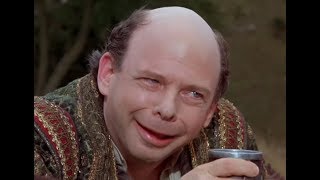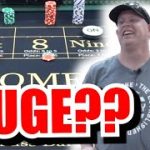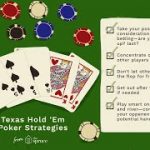Learn Poker Video Source & Info:
To maximize profit and win money at poker, you need to be one step ahead of your opponent when assessing a table dynamic with multi layered or level thinking. In this video, I teach you how to revamp how you think about the levels of poker with the goal of easier implementation to enhance your thought processes.
DPS Method Video: https://youtu.be/DyQ1dOr0s1E
Excerpt:
If you are watching this video, I’m sure you have at least some understanding of the concept of leveling. Even so, since it’s such an abstract concept, just understanding how it works, may not help us play better. To that end, I will discuss how or on what level our opponents think at the poker table. My intention is to help simplify how we categorize these players with the goal of optimizing how to maximize our profit versus them.
Our goal in poker is to maximize our earn on every single hand we play. The best way to do this is to set ourselves up for profitable situations while, at the same time, avoiding unprofitable spots. There’s a lot more to it than just opening a particular range, 3-betting or c-betting a certain percentage, etc. It’s great to have a solid base strategy, but it should only be relied on in complete vacuum spot. We almost always have some kind of read, even if it’s just what someone looks like (for you live players), their chosen starting stack size, or even their chosen avatar (for you online players). Any little bit of information we have help us deduce how our opponents think, and thus, improve the quality of our decisions versus them. You will find that there are patterns and clues that we can glean that help us better understand what our opponents are thinking about.
When we want to start learning how to exploit particular players in particular ways, it helps to acknowledge that there are different ways of thinking about the game which can, in rudimentary terms, be broken down into different levels. Basically, it all comes down to what a player is considering during a hand. The more complex a players thought process and awareness of what everyone else is doing, the higher level he or she is thinking on. But before we get too complicated here, let’s talk about the traditional understanding of the levels of thought in poker.
While processing the information in this section, keep in mind that there is a wide variation of abilities within each level. There are good level two and bad level three players. A level two player who plays, for the most part, “mistake-free” poker might enjoy a higher win-rate than a player who thinks on a higher level due to a number of factors. Maybe he or she has better control of tilt or maybe the level 3 player has flawed tactics, poorly using the information gathered.
Instead of getting caught up in this leveling business, the main thing I’d like you to take away from this information, is how weaker and stronger players think differently about the game. Our method of attacking them, especially post-flop, should be contingent on their level of thought, but typically should not be our entire focus when assessing a table. In other words, don’t rack your brain on this stuff, just be aware of it, mostly when forming post-flop lines. Pre-flop, it’s mostly about the reg/fish dynamic, and tailoring your plans accordingly.
My advice is to strive to always play on level 4 and just adjust constantly. Assess and reassess the dynamic and always have a clear plan before entering pots. Figuring out how to attack your table dynamic is the most important thing we can do. A player with weaker technical skills can beat a mathematical master in the long term, just by finding more profitable situations more often. The end game of poker, once you learn all the basics, is the figure out how to create profit for yourself. You need a consistent and reliable plan on how to tackle every dynamic you could ever face. And, through practice, you will learn how to adjust those tactics on the fly, based on any contingency you might face. My own personal method is very simple, I use something called the DPS method, which stands for Dynamic-Plan-Sizing. I did a video on the subject awhile back and will stick a link to it in the description and on over there as well.
http://www.automaticpoker.com/blog.html
https://www.twitch.tv/automaticpoker
https://www.facebook.com/automaticpoker/
https://twitter.com/automaticpoker/
Be sure to comment and subscribe. I would also love to hear from you if you have any suggestions for future videos. You can reach me at jim@automaticpoker.com.
If you are interested in learning more about how short stacking can speed along the learning process in cash games, be sure to pick up my book or e-book at http://www.automaticpoker.com/cash-game-poker-book.html
Disclaimer: I do not claim rights to the clip from “The Princess Bride”, only using it for educational purposes.
Source: YouTube







This is all about heads up pots.
Phil Hellmuth level="Eagle"…according to his book…Question-Can you play poker blind? Actually blind as in your eyes are permanent blind from disease.
Mister! One couldn’t put those words together better than that!
Good video. Scary thumbnail.
Watch later
can you link me to the film clip? what movie is it from?
why must you show off with advanced words? come on speak normal language this isnt a harvard report…
Is this Tom Dwan?
This all naturally comes from experience if you are at all mentally sharp. If youre playing a really small stakes game IRL, virtually nobody is above level 2 and many arent above level1. That means you need a more simple EPS and watch them closely.
Also, hes bsing about L4. Only 2 people can do that, Doyle and Ivey.